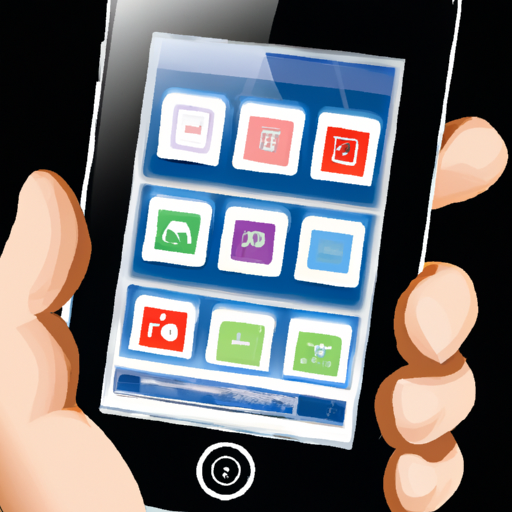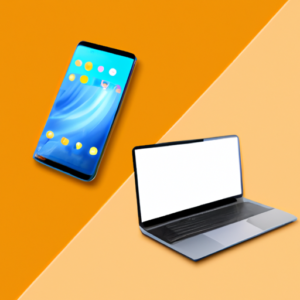Imagine having a software that is easy to navigate and use, allowing you to seamlessly complete tasks with just a few clicks. Now picture this software being available on your phone, allowing you to access it whenever and wherever you are. In this article ‘Stay Productive On-the-Go: How User-Friendly Software and Mobile Apps Simplify Your Life’, we will explore the user-friendliness of the software and whether it offers a mobile app for on-the-go access. We will dive into the key features that make the software easy to use and discuss how the mobile app enhances your convenience. Get ready to discover a software experience that puts you first!
User-Friendliness of the Software
Intuitive Interface
When it comes to software usability, an intuitive interface plays a crucial role in ensuring a positive user experience. The software should provide a clear and user-friendly interface that allows you to navigate effortlessly through its features. A well-designed interface enhances productivity and reduces the learning curve for new users. By incorporating familiar and logical design elements, the software can provide users with a sense of familiarity and ease.
Simplicity of Navigation
Easy navigation is a key aspect of user-friendliness. The ability to find the desired functions and features quickly can significantly enhance efficiency. A software with a simple navigation system allows you to seamlessly move between different sections, menus, and options. Clear labeling, intuitive icons, and a well-organized menu structure contribute to a user-friendly navigation experience. When the navigation flows smoothly, you can save time and focus on your tasks without getting stuck in confusing menus or submenus.
Ease of Learning
Learning how to use a new software can sometimes be a daunting task, often requiring time and effort. However, a user-friendly software aims to minimize the learning curve and make the onboarding process smoother. The software should provide clear and concise instructions, tooltips, and user guides to assist you in understanding its features and functionalities. Additionally, interactive tutorials or walkthroughs can be valuable tools to help users grasp the software’s capabilities and become proficient quickly. A user-friendly software prioritizes ease of learning, regardless of the user’s technical proficiency.
Customization Options
One size does not fit all, especially when it comes to software preferences. A user-friendly software understands the diverse needs of its users and offers customization options to adapt to individual preferences and workflows. Customization options may include the ability to personalize the interface layout, colors, themes, and even shortcuts. By allowing users to tailor the software to their liking, it enhances the overall user experience and flexibility. With customization options, the software can feel more like a personalized tool rather than a rigid system.

Availability of Mobile App
Compatibility Across Devices
In today’s fast-paced world, having access to software on the go has become increasingly important. A user-friendly software understands this need and often provides a mobile app to ensure availability across various devices. Compatibility across different operating systems, such as iOS and Android, allows users to access the software conveniently on their smartphones, tablets, or other portable devices. A well-designed mobile app should offer a seamless transition from the desktop version, providing a consistent interface and feature set for a consistent user experience.
Operating System Support
To ensure a smooth user experience, a user-friendly software should support the major operating systems available in the market. This includes compatibility with Windows, macOS, and various Linux distributions. By supporting multiple operating systems, the software caters to a wider user base, allowing individuals to use their preferred operating system without compatibility concerns. Furthermore, regular updates and compatibility optimizations reflect the software’s commitment to providing an enjoyable user experience regardless of the chosen operating system.
Installation Process
A user-friendly software aims to simplify the installation process, minimizing any potential hurdles for users. The installation process should be straightforward, with clear instructions guiding you through each step. Ideally, the software should offer a user-friendly installer that guides you through the necessary configuration settings and ensures a hassle-free installation. The installation wizard should require minimal technical knowledge and provide clear prompts, eliminating any ambiguity or confusion. By streamlining the installation process, users can quickly get up and running with the software.
User Interface and Features
A mobile app should provide a user interface that is optimized for smaller screens and touch interactions. A user-friendly mobile app ensures that the interface is responsive, visually appealing, and easy to navigate. It should prioritize the essential features and functions, offering a streamlined experience on a smaller device. The mobile app should maintain consistency with the desktop version, allowing users to seamlessly transition between the two platforms. Additionally, user-friendly mobile apps often incorporate intuitive gestures and touch controls, further enhancing the convenience and usability.
Offline Access Capability
In today’s connected world, it is not always guaranteed to have a stable internet connection. A user-friendly mobile app takes this into account and provides offline access capabilities. This means that even without an internet connection, you can continue to use the mobile app and access previously saved data or perform certain limited functions. Offline access allows you to remain productive and work on essential tasks even in situations where an internet connection is not available. By providing this feature, a user-friendly mobile app caters to the needs of users who are constantly on the go.
In conclusion, software user-friendliness encompasses various aspects such as intuitive interfaces, simplicity of navigation, ease of learning, and customization options. A user-friendly software strives to provide a positive and efficient user experience, reducing the learning curve and maximizing productivity. Additionally, the availability of a mobile app further enhances the accessibility and convenience of the software, allowing users to stay connected and productive while on the go. A well-designed mobile app should offer compatibility across devices, support major operating systems, streamline the installation process, provide a user-friendly interface, and offer offline access capabilities. With a focus on user-friendliness and mobile accessibility, software becomes a valuable tool that seamlessly integrates into your daily workflow.


